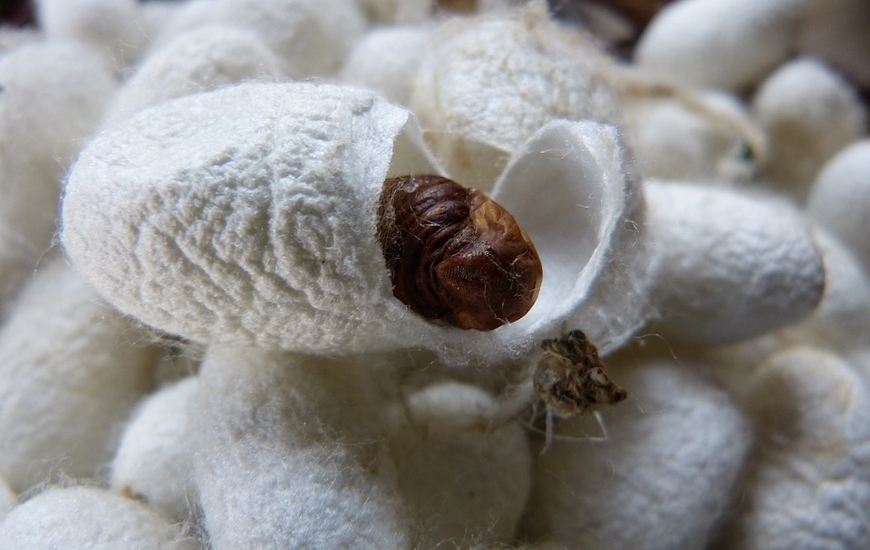by SERENA GABRIELLI* and HYO WON KWAK**
The principle is as simple as it is innovative: harnessing the extraordinary properties of two of silk’s main proteins, fibroin and sericin, to develop devices capable of converting motion into electrical energy.
Fibroin, derived from the structural core of the silk filament through extraction and purification processes, provides strength and piezoelectric properties; sericin, obtained as the natural coating of the filament during degumming, is valued for its adhesiveness and biocompatibility. These characteristics, when combined, make it possible to create a new family of flexible and durable nanogenerators capable of converting movements or vibrations into electricity to power wearable sensors, micro-LEDs, and low-energy wireless modules.
The potential technical impact goes far beyond the creation of new nanogenerators and the reduced reliance on traditional batteries: as already demonstrated by several research groups, silk can effectively replace petroleum-derived synthetic materials in coatings, separators, and other components for batteries and supercapacitors. The goal is to build more sustainable, efficient, and safer electronics, with a life cycle—from production to end of life—that is more “natural and green”: largely biodegradable devices with significantly fewer harmful substances released into the environment. And if this were not enough, the research is also driven by an ethical and circular economy perspective.
The silk cocoons used come from “Ahimsa” farming, a method that respects the silkworm’s life cycle, allowing them to transform into butterflies and fly away undisturbed. However, although Ahimsa silk ensures animal welfare, it is considered less valuable for the textile industry because the filament is relatively discontinuous. This apparent limitation becomes instead an opportunity in the industrial applications for energy and electronics, where silk proteins can be exploited regardless of filament continuity.
In this way, a material traditionally regarded as “less noble” in its conventional market finds new life as a high-value technological resource, while also becoming a symbol of more ethical and sustainable production choices.
* University of Camerino, Italy
** Seoul National University, South Korea
-

-
26 August 2025






















